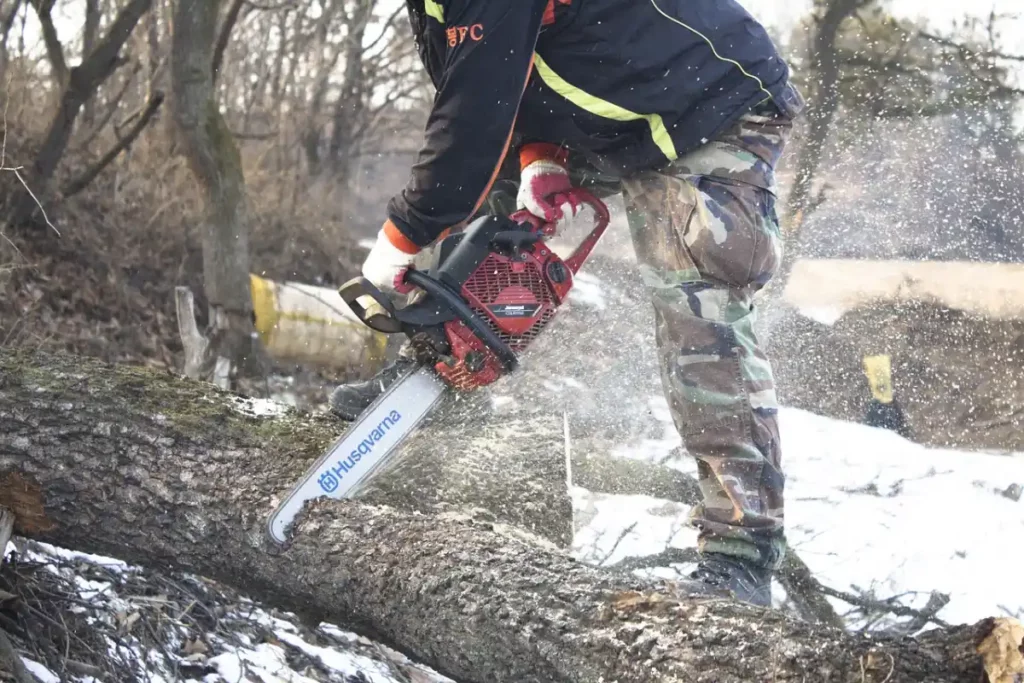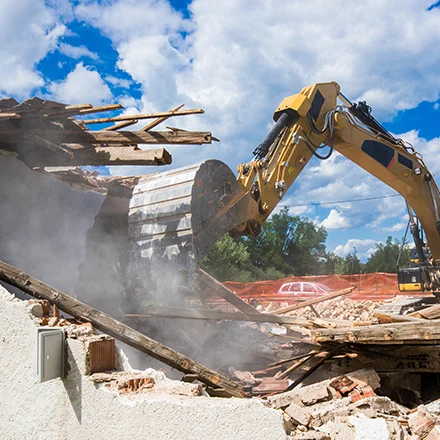Wood dust, a seemingly innocuous byproduct of woodworking, holds significant environmental and industrial importance. Predominantly generated in woodworking and manufacturing industries, it is a collection of small-sized dust particles generated during cutting, sewing, and polishing wood from machinery and equipment. This delicate particulate matter impacts the air quality and poses health risks to those exposed. Understanding the nature and implications of wood dust is crucial, especially in environments where its presence is a daily reality.
Our goal with this blog is to provide woodworking professionals and enthusiasts with information and techniques for navigating the hazards of wood dust. We can make woodworking settings safer and healthier by knowing the dangers and applying appropriate preventative and protection measures. Let’s see how we can do it one sawdust particle at a time.
Composition of Wood Dust
Wood dust is a complex and varied mixture primarily arising from the mechanical processing of wood. Its composition largely depends on the wood species and the processing method. The main constituents of wood dust include:
- Cellulose: This polysaccharide forms about 50% of wood dust and is the primary structural component of plant cell walls. It’s generally non-toxic.
- Lignin: Providing strength and rigidity to wood, lignin accounts for approximately 25% of wood dust.
- Hemicellulose: Comprising around 15% of wood dust, these polysaccharides act as a binder between cellulose and lignin.
- Extractives: These organic compounds vary significantly among wood species, including resins, tannins, and essential oils. Some of these can be irritating or toxic.
- Inorganic Substances: The presence of minerals, metals, and salts in wood dust can vary, influenced by the type of wood and the woodworking processes used.
Types of Wood Dust
The two primary categories of wood dust are based on the wood’s hardness:
- Hardwood Dust: Sourced from trees like oak, maple, and walnut, hardwood dust is typically finer and more irritating than softwood dust. It contains higher levels of extractives, which can cause allergic reactions and respiratory issues. It is derived from deciduous trees, which lose their leaves in the fall.
- Softwood Dust: Coming from trees like pine, fir, and cedar, this dust is generally larger and heavier, reducing its likelihood of deep lung penetration. Nevertheless, softwood dust can still provoke respiratory irritation and allergic responses. It is sourced from coniferous trees, which do not lose their leaves but remain green year-round (evergreens).
The specific nature of woodworking, such as sanding or sawing, and the treatment of the wood (e.g., pressure treatment) further influence the composition and characteristics of the resulting wood dust.
Health Risks
The health implications of wood dust exposure can vary significantly, depending on factors like the dust type, exposure duration, and individual susceptibility:
- Respiratory Sensitization: Continuous exposure can lead to sensitisation, where the immune system overreacts to wood dust particles, leading to asthma and rhinitis.
- Chronic Obstructive Pulmonary Disease (COPD): Prolonged exposure to wood dust is linked to an increased risk of developing COPD, marked by persistent respiratory symptoms and airflow limitation.
- Nasal Cancer: There is a notably higher risk of nasal cancer, especially among those exposed to hardwood dust in occupations like furniture making and carpentry.
According to research by the International Agency for Research on Cancer (IARC), wood dust is classified as a group 1 carcinogen. IARC states that wood dust can cause cancer in the nasal cavity, sinuses, and throat. Wood dust entering the human body causes respiratory inflammatory diseases, which can reduce lung capacity and allergic reactions in the lungs, such as asthma.
| Wood Type | Affect |
|---|---|
| Skimmed wood | Causes inflammation of the skin and impaired lung function. |
| Cedar | Side asthma, atopic dermatitis, impaired lung function, rhinitis, eye inflammation, and eye irritation. |
| Beech | Dermatitis, rhinitis, asthma, nasal cancer |
| Oak wood | Nose cancer |
| Pine | Rhinitis, asthma, skin irritation, atopic dermatitis |
| Yew | Toxicity, skin irritation, dermatitis |
| Douglas Fir | Reduced lung capacity |
The above table showing the health effects of some common woods.
Respiratory Effects
Wood dust, a common byproduct of woodworking activities, can pose significant respiratory health risks. The severity of these risks varies depending on factors such as wood type, exposure levels, and individual susceptibility.
Short-term Respiratory Effects:
- Irritation of Eyes, Nose, and Throat: The most immediate and typical response to wood dust exposure is irritating the mucous membranes, leading to coughing, sneezing, runny nose, and watery eyes.
- Wheezing: This symptom, characterised by a high-pitched sound during breathing, indicates narrowing airways. Wood dust can trigger wheezing, especially in individuals with asthma.
- Shortness of Breath: Difficulty in breathing and chest tightness can result from wood dust irritating the airways.
Long-term Respiratory Effects:
- Respiratory Sensitization: Prolonged exposure can lead to the immune system becoming overly sensitive to wood dust, causing allergic reactions such as asthma attacks, rhinitis, and conjunctivitis.
- Chronic Obstructive Pulmonary Disease (COPD): Long-term exposure to wood dust, combined with factors like smoking, can lead to COPD, marked by symptoms like persistent shortness of breath, wheezing, and coughing.
- Nasal Cancer: Extended exposure to certain types of wood dust, particularly from hardwoods, has been linked to an increased risk of nasal cancer, notably among carpenters and furniture makers.
Skin and Eye Irritation
Wood dust doesn’t only affect the respiratory system; it also poses risks to the skin and eyes.
Skin Irritation:
- Contact Dermatitis: Direct skin contact with wood dust can lead to this type of inflammation, causing redness, itching, burning, and swelling.
- Allergic Dermatitis: A more severe form of skin reaction, allergic dermatitis, is caused by an allergic response to wood dust. This condition can be more persistent and severe than contact dermatitis.
Eye Irritation:
- Conjunctivitis: Wood dust can inflame the conjunctiva (the lining of the eyelids and eyeballs), leading to redness, itching, and tearing.
- Corneal Abrasion: Scratches on the cornea can occur when wood dust rubs against the eye, causing pain, redness, and light sensitivity.
Prevention and Protection
In the woodworking industry, the adage “prevention is better than cure” holds particularly true regarding managing the risks associated with wood dust. Implementing effective strategies to prevent wood dust exposure is crucial for safeguarding workers’ health. These strategies can be broadly categorised into engineering controls, administrative controls, and the use of personal protective equipment (PPE).
Here, there is one more practical option: Real-time air quality monitors. They monitor air parameters and give real-time reports. Not only these, but with their automated mitigation systems, you don’t have to worry about the mitigation process.
Engineering Controls
The most effective means of minimising wood dust exposure is through engineering controls. These involve modifications at the source of the dust:
- Dust Collection Systems: Installing dust collection systems is a proactive approach to capture wood dust directly at the point of generation, significantly reducing the amount of dust that becomes airborne. i.e., (saws, drills, and lathes) can be equipped with high-powered vacuum systems. These vacuums capture wood particles as they’re made to prevent significant messes and prolonged dust exposure.
- Enclosure of Woodworking Machinery: Enclosing machinery helps contain wood dust, preventing it from dispersing into the workplace environment.
- Wet Methods: Wet methods for dust control can effectively suppress dust generation during woodworking processes.
Administrative Controls
Administrative controls are policies and procedures designed to reduce the risk of exposure:
- Work Practices: Implementing specific work practices that minimise dust generation and exposure. This includes regular maintenance and cleaning of work areas to remove wood dust.
- Training: Comprehensive training programs for workers are essential. These should cover the health hazards associated with wood dust, proper use of PPE, safe working practices, and effective cleanup procedures.
- Providing PPE: Ensuring personal protective equipment availability and proper use is a critical administrative control.
Personal Protective Equipment
PPE serves as the last line of defence against wood dust exposure:
- Respirators: Respirators are critical for protecting the respiratory system. There are two main types:
- Air-purifying respirators filter out particles from the air.
- Supplied-air respirators provide clean air from an external source.
- Gloves: Gloves made from materials like nitrile or neoprene protect the hands from wood dust. Not only can gloves help prevent dermatitis, but they can also mitigate potential machinery injuries, such as cuts, bruises, and scrapes.
- Goggles: Eye protection is essential, and goggles made from materials such as polycarbonate can effectively shield the eyes from wood dust particles.
Conclusion
So, What is Wood dust? Wood dust is a fine particulate material produced during the cutting, sanding, or shaping of wood.
It is a prevalent byproduct in woodworking environments, presents significant health hazards. These risks range from respiratory complications to dermatological and ocular (relating to the eyes or the ability to see) problems. Wood dust can cause irritations such as coughing, sneezing, skin rashes, and eye-watering in its milder forms. However, its impact can escalate to more severe conditions, including asthma, dermatitis, conjunctivitis, chronic obstructive pulmonary disease (COPD), and even nasal cancer following long-term exposure.
In conclusion, while wood dust is an inherent aspect of woodworking, its health implications are not to be taken lightly. The woodworking industry can ensure safer, healthier workplaces through a comprehensive strategy combining engineering and administrative controls and appropriate PPE. This proactive approach protects workers from the immediate effects of wood dust and reduces the long-term health risks associated with its exposure.






